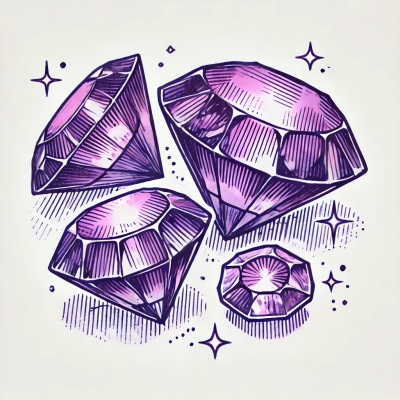Ember-FusionCharts
A lightweight EmberJS component which provides bindings for FusionCharts JavaScript Charting Library. It easily adds rich and interactive charts to any ambitious Ember application.
Table of Contents
Getting Started
Requirements
- Node.js, NPM/Yarn installed globally in your OS.
- FusionCharts and Ember installed in your project, as detailed
Installation
Direct Download
All binaries are located on our github repository.
Install from NPM
To install ember-fusioncharts to any existing ember project, run:
For Modern Ember CLI:
$ npm install ember-fusioncharts --save
For Earlier Ember CLI (and addon developers):
$ npm install ember-fusioncharts --save-dev
$ ember g ember-fusioncharts
Then install fusioncharts to your project:
$ npm install fusioncharts --save
Then import fusioncharts library to your ember-cli-build.js build file:
'use strict';
const EmberApp = require('ember-cli/lib/broccoli/ember-app');
module.exports = function(defaults) {
let app = new EmberApp(defaults, {
});
app.import('node_modules/fusioncharts/fusioncharts.js');
app.import('node_modules/fusioncharts/fusioncharts.charts.js');
app.import('node_modules/fusioncharts/themes/fusioncharts.theme.fusion.js');
return app.toTree();
};
Quick Start
After installing ember-fusioncharts, create a simple component(e.g. chart-viewer, also you can use it anywhere in your application) to show your interactive charts, run:
$ ember g component chart-viewer
Write your chart logic in chart-viewer.js file:
import Component from '@ember/component';
const myDataSource = {
chart: {
caption: "Harry's SuperMart",
subCaption: 'Top 5 stores in last month by revenue',
numberPrefix: '$',
theme: 'fint'
},
data: [
{
label: 'Bakersfield Central',
value: '880000'
},
{
label: 'Garden Groove harbour',
value: '730000'
},
{
label: 'Los Angeles Topanga',
value: '590000'
},
{
label: 'Compton-Rancho Dom',
value: '520000'
},
{
label: 'Daly City Serramonte',
value: '330000'
}
]
};
export default Component.extend({
title: 'Ember FusionCharts Sample',
width: 600,
height: 400,
type: 'column2d',
dataFormat: 'json',
dataSource: myDataSource
});
And use fusioncharts-xt component in your chart-viewer.hbs template to show your charts:
<h1>{{ title }}</h1>
{{fusioncharts-xt width=width height=height type=type dataFormat=dataFormat
dataSource=dataSource}}
Then, use chart-viewer component in your application.hbs template:
{{chart-viewer}} {{outlet}}
Working with APIs
In your component file:
import Component from '@ember/component';
export default Component.extend({
width: 600,
height: 400,
type: 'column2d',
dataFormat: 'json',
dataSource: {
chart: {
caption: 'Countries With Most Oil Reserves [2017-18]',
subCaption: 'In MMbbl = One Million barrels',
xAxisName: 'Country',
yAxisName: 'Reserves (MMbbl)',
numberSuffix: 'K',
theme: 'fusion'
},
data: [
{
label: 'Venezuela',
value: '290'
},
{
label: 'Saudi',
value: '260'
},
{
label: 'Canada',
value: '180'
},
{
label: 'Iran',
value: '140'
},
{
label: 'Russia',
value: '115'
},
{
label: 'UAE',
value: '100'
},
{
label: 'US',
value: '30'
},
{
label: 'China',
value: '30'
}
]
},
events: null,
message: 'Hover on the plot to see the value along with the label',
init() {
this._super(...arguments);
const self = this;
this.set('events', {
dataplotRollOver: function(eventObj, dataObj) {
self.set(
'message',
'You are currently hovering over ' +
dataObj.categoryLabel +
' whose value is ' +
dataObj.displayValue
);
},
dataPlotRollOut: function(eventObj, dataObj) {
self.set(
'message',
'Hover on the plot to see the value along with the label'
);
}
});
}
});
In your template file:
{{fusioncharts-xt width=width height=height type=type dataFormat=dataFormat
dataSource=dataSource events=events}}
<p>{{ message }}</p>
Using this example when you hover on a dataplot you will get to see the value and label of the dataplot underneath the chart.
Working with events
To attach event listeners to FusionCharts, you can use the events attribute in the fusioncharts-xt template.
In your template file:
{{fusioncharts-xt width=width height=height type=type dataFormat=dataFormat
dataSource=dataSource events=events}}
Usage and integration of FusionTime
From fusioncharts@3.13.3-sr.1 and ember-fusioncharts@2.0.0, You can visualize timeseries data easily with vue.
Learn more about FusionTime here.
import FusionTime library to your ember-cli-build.js build file:
'use strict';
const EmberApp = require('ember-cli/lib/broccoli/ember-app');
module.exports = function(defaults) {
let app = new EmberApp(defaults, {
});
app.import('node_modules/fusioncharts/fusioncharts.js');
app.import('node_modules/fusioncharts/fusioncharts.timeseries.js');
return app.toTree();
};
Create a simple component(e.g. timeseries-viewer, also you can use it anywhere in your application) to show your interactive charts, run:
$ ember g component chart-viewer
Write your chart logic in timeseries-viewer.js file:
import Component from '@ember/component';
const dataSource = {
data: null,
caption: {
text: 'Sales Analysis'
},
subcaption: {
text: 'Grocery & Footwear'
},
series: 'Type',
yAxis: [
{
plot: 'Sales Value',
title: 'Sale Value',
format: {
prefix: '$'
}
}
]
};
const jsonify = res => res.json();
const dataFetch = fetch(
'https://s3.eu-central-1.amazonaws.com/fusion.store/ft/data/plotting-multiple-series-on-time-axis-data.json'
).then(jsonify);
const schemaFetch = fetch(
'https://s3.eu-central-1.amazonaws.com/fusion.store/ft/schema/plotting-multiple-series-on-time-axis-schema.json'
).then(jsonify);
export default Component.extend({
title: 'TimeSeries Example',
width: 600,
height: 400,
type: 'timeseries',
dataFormat: null,
dataSource: null,
init() {
this._super(...arguments);
this.set('dataFormat', 'json');
this.createDataTable();
},
createDataTable() {
Promise.all([dataFetch, schemaFetch]).then(res => {
const data = res[0];
const schema = res[1];
const fusionDataStore = new FusionCharts.DataStore();
const fusionDataTable = fusionDataStore.createDataTable(data, schema);
dataSource.data = fusionDataTable;
this.set('dataSource', dataSource);
});
}
});
And use fusioncharts-xt component in your timeseries-viewer.hbs template to show your charts:
<h1>{{ title }}</h1>
{{fusioncharts-xt width=width height=height type=type dataFormat=dataFormat
dataSource=dataSource}}
Then, use timeseries-viewer component in your application.hbs template:
{{timeseries-viewer}} {{outlet}}
Going beyond Charts
- Explore 20+ pre-built business specific dashboards for different industries like energy and manufacturing to business functions like sales, marketing and operations here.
- See Data Stories built using FusionCharts’ interactive JavaScript visualizations and learn how to communicate real-world narratives through underlying data to tell compelling stories.
For Contributors
- Clone the repository.
- Install dependencies.
- Run
npm start to start the dev server.
- Open
http://localhost:4200/ in your browser.
$ git clone https://github.com/fusioncharts/ember-fusioncharts.git
$ cd ember-fusioncharts
$ npm i && bower install
$ npm start
To build, run:
$ npm run build
Licensing
The FusionCharts Ember component is open-source and distributed under the terms of the MIT/X11 License. However, you will need to download and include FusionCharts library in your page separately, which has a separate license.



